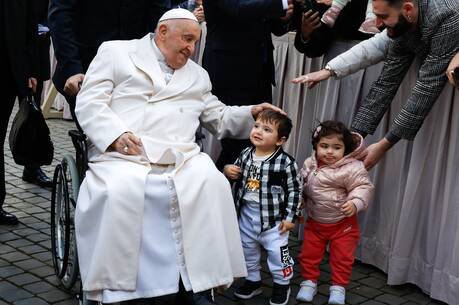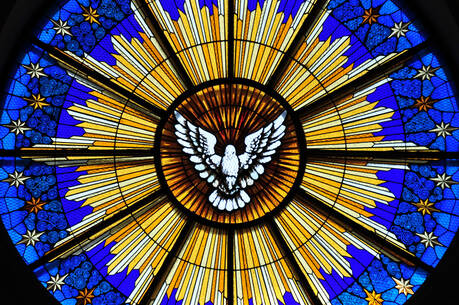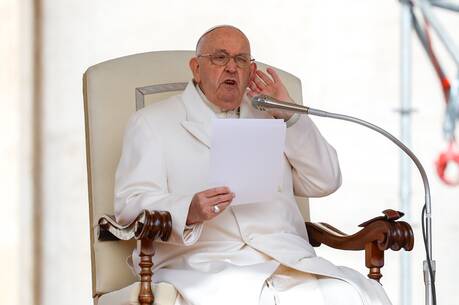 Here is an important article to read (H/t to Dotcommonweal.). Karen J. Terry, the lead investigator for the John Jay College study on the "Causes and Contexts" of clerical sexual abuse in the church, responds to critics who faulted the conclusions of the study and the methods used to reach them. Professor Terry charges that the media coverage oversimplified the report's conclusions, that the "Blame the 1960s" summary was unfair, that the study was not influenced by the bishops, and that the report did in fact critique the bishops' record on abuse, contrary to some reports. Ms. Terry is also a professor in the Department of Criminal Justice at John Jay College, also serves as the college’s Associate Provost and Interim Dean of Research and Strategic Partnerships. Here she is summing up what the study did find:
Here is an important article to read (H/t to Dotcommonweal.). Karen J. Terry, the lead investigator for the John Jay College study on the "Causes and Contexts" of clerical sexual abuse in the church, responds to critics who faulted the conclusions of the study and the methods used to reach them. Professor Terry charges that the media coverage oversimplified the report's conclusions, that the "Blame the 1960s" summary was unfair, that the study was not influenced by the bishops, and that the report did in fact critique the bishops' record on abuse, contrary to some reports. Ms. Terry is also a professor in the Department of Criminal Justice at John Jay College, also serves as the college’s Associate Provost and Interim Dean of Research and Strategic Partnerships. Here she is summing up what the study did find:
The findings indicate that abusive behavior could best be explained through an interaction of micro- and macro-level factors. While the patterns of abuse in the Catholic Church are consistent with (though not causedby) patterns of other types of social behavior from the 1960s through the 1980s (when abuse cases peaked), data showed that most of the priest-abusers had problems such as intimacy deficits, an emotional and psycho-sexual maturity level similar to adolescents, and life stressors, as well as inadequate seminary education on how to live a life of chaste celibacy.
The abuse was particularly pronounced for men who were ordained in the 1940s and 1950s, a time when there was a substantial increase in Catholic seminarians and inadequate education for them.
These men were placed in positions where they were mentoring and nurturing adolescents and, like many non-clergy sex offenders, they regressed to abusive behavior.
Few abusers were primarily sexually attracted to children; a very small percentage of priests were clinically diagnosed with pedophilia (by clinicians, using standard guidelines of the Diagnostic and Statistical Manual of Mental Disorders). Many had other problems, such as alcoholism, stress, or financial improprieties.
And many priests who abused children also had sexual relationships with adults.
Taken together, this means that there is no risk assessment instrument that could have weeded out the abusers before ordination. This was a human problem; some adults are susceptible to abuse children in the Church and in any organization where adults spend time with children.
But the abusers themselves are only one part of the story. The Causes and Context report also chronicled in detail the Church’s response to abuse. The report states that the Church has taken significant steps in creating safe environments since signing the Charter for the Protection of Children and Young People in 2002.
The report also notes, however, that the implementation of child protection policies in the 1980s and 1990s was focused on priests instead of victims, was not consistent across dioceses in the United States, and lacked transparency.








http://www.commonwealmagazine.org/blog/?p=14102#comments
Excerpts:
- report makes up its own definition of pedophilia altering current age limits (she doesn’t even mention this)
- she makes no mention that the complete report is based upon “REPORTED” events (experts agree that probably 50% or more of all abuse goes unreported)
- there is no mention in her f/u about the ten seminaries; what did the study find; why did certain ordination classes have more than 15% abusers? there was no sub-set on seminaries run by abbeys e.g. Conception, St. John’s, St. Meinrad’s, St. Benedict’s, LA where we have documented proof of homosexual acting out among monks that spilled over to abuse with students (this reached a crisis point in the late 1980’s)
- the original report does not focus on “criminal” behavior – in fact, it dwells on all behavior but doesn’t say much about criminal behavior
I agree with Mark Silk’s point that the higher number of priests of a certain age at that time is something that deserves to be explored more thoroughly.
Whoa! Wait a minute! Criticism of research released to the public in the forms of print or media commentary or even parody is one thing but threatening the person and safety of the women and men who conducted the study is completely out of order and unacceptable, and I trust that the appropriate law enforcement agencies have been contacted.
Dr. Terry and her team are part of the solution, not the problem, and deserve to be treated as such. The very last thing we need is for professionals to be scared off from future investigation of this highly divisive and emotionally-charged issue by an angry mob (or individual whack job!) - some with not-so-hidden agendas which have little or nothing to do with the parameters of the intended study. A non-polarizing analytical voice of reason is needed now more than ever precisely because the Church's future response to this CONTINUING problem has yet to be clearly designed and articulated. Given the previous LACK of transparency which has permeated the institution now placed under the microscope apparently of its own volition, it is simply not the time to shut (or shoot!) down those who have been able to get their feet in the door to investigate.